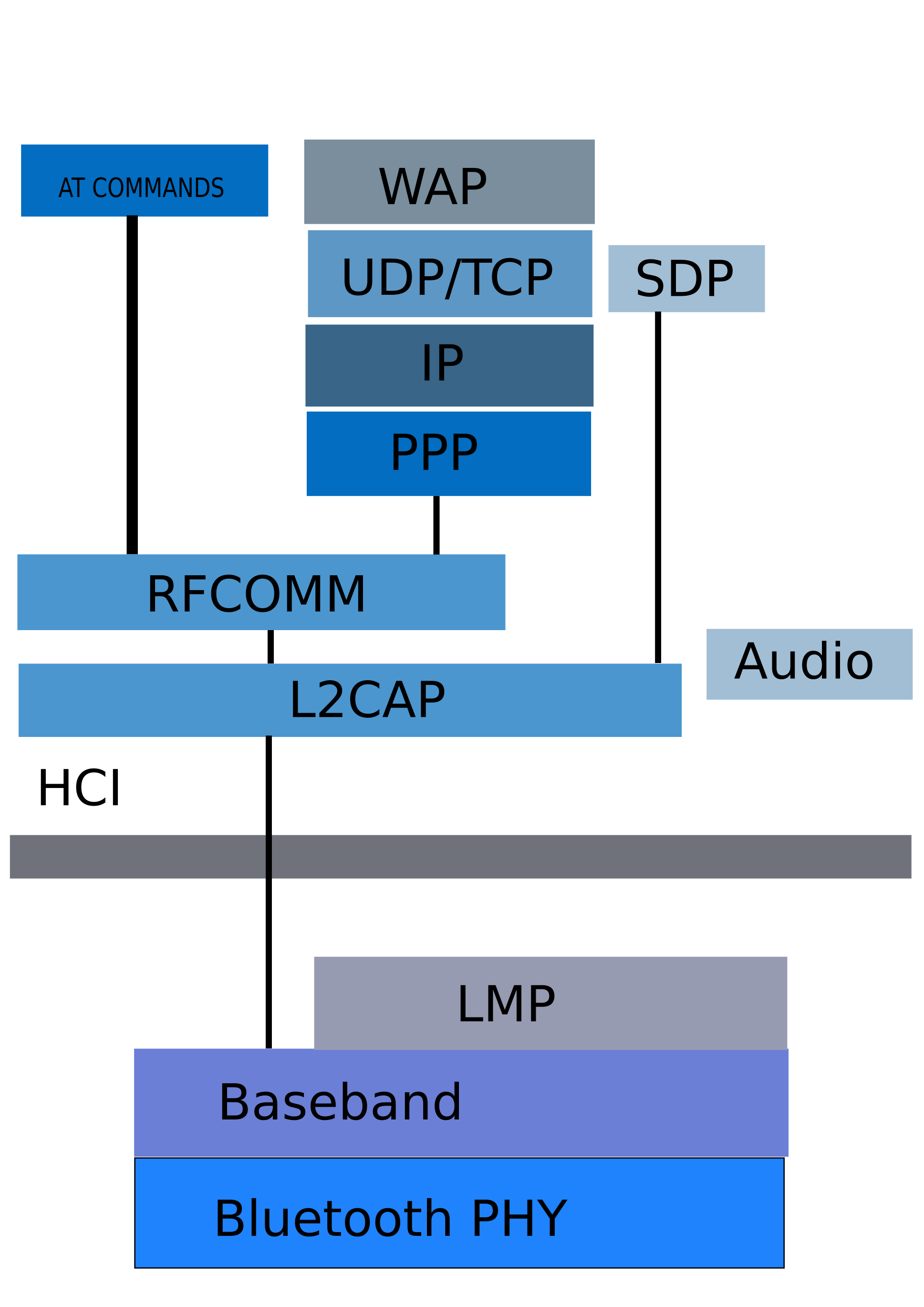Bluetooth protocol cheat sheet
This is a very simplified summary of the bluetooth protocol. Useful for quick reference.
Physical layer:
Modes
There are 4 modes for Bluetooth. Mainly :
- BR 1Mbps (Basic Rate) :
- GFSK
- Peak to average : 0dB
- Can support saturation (since FSK can be received with saturation detectors).
- EDR 2Mbps (pi/4 DQPSK)
- DQPSK
- EDR 3Mbps (pi/8 D8PSK)
- Peak to average : ~3.5dB
- LE 1Mbps:
- GFSK
- LE 2Mbps:
- GFSK
- LE Long-Range: Achieved by using strong FEC.
Channel Bandwitdh:
- 1MHz channels (2402 to 2480 MHz):
- BR (GFSK)
- EDR (DQPSK, D8PSK)
- 2MHz channels. Total of 40 2MHz channels.
- LE
Time/frequency characteristics:
-
Bluetooth is a TDMA system. It has predetermined time when a packet will be sent.
-
There are 1600 slots per seconds (1 slot = 625us). A data packet can be either 1 slot or 5 slots.
-
Symbol rate is 1Msps (Mega symbol per seconds). Irrespective of the modulation rate. For example D8PSK has 3 bits per symbol.
-
Bluetooth hops over 78 frequencies.
-
Bandwitdh is 1MHz.
Link manager:
Connection:
- Inquiry = Discovery.
- Master finds other device with Inquiry.
- Paging = Connection
- Master then connects to device with Paging.
- Piconet :
- 1 Master
- Up to 7 active slaves
- Up to 255 parked devices
BT Addresses:
Each bluetooth address contains 48 bits.
- NAP
- 16 bits
- UAP
- 8 bits
- LAP
- 24 bits
- NAP & UAP are assigned by IEEE
- LAP is assigned by the manufacturer
Bluetooth Stack:

Bluetooth Mesh:
A new feature is Bluetooth Mesh. It allows many-to-many device communication. It will allow up to 32767 Nodes in a single mesh.
Here is more details on the mesh specification.
References:
[1] : http://www.dziwior.org
[2] : Bluetooth Specification Core 5
[3] : Bluetooth Long Range
[4] : Bluetooth mesh